Kate Burgess - Nature-Based Solutions to Climate & Biodiversity Challenges
Kate Burgess is a Salazar Center partner and serves as NCEL’s Conservation Program Manager, where she enjoys collaborating with legislators on a variety of land, water, wildlife, and human issues. In this podcast she shares with us the new (yet old) push for nature-based solutions to climate and biodiversity challenges.
The Salazar Center is hosting the fifth annual International Symposium on Conservation Impact on October 11-12 , 2023 in Denver, Colorado. The agenda focuses on nature-positive solutions and how they can catapult our communities towards durable, high-impact outcomes for climate, biodiversity, and human well-being.
Listen here: https://feeds.podetize.com/WC1AYamkle.mp3
Watch on YouTube here: https://youtu.be/uj8dcuUfIoo
The Salazar Center at Colorado State University
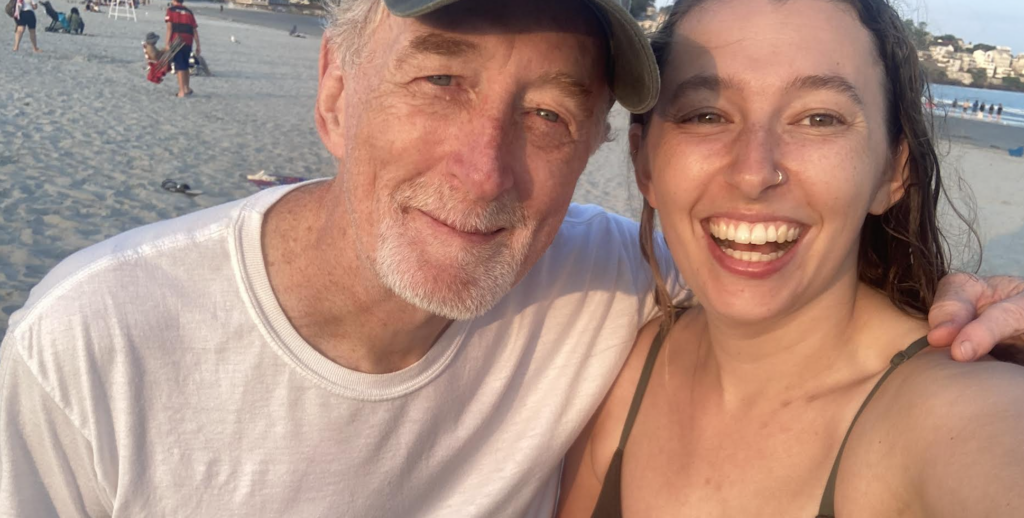
Nature-Based Solutions: Healing nature with regenerative ocean farming
My dad and I spend a lot of time surfing. We mostly go in the winter, not because we’re gluttons for punishment, but because that’s when the swell is allegedly the best on this side of the Atlantic. With our 7 mm wetsuits, booties, mittens, and hoods, we’ve adopted the proxy skin of seals, reminded only of the season when the sea is dusted with snow, or when an icy wave humbles the exposed skin on our face, leaving eyes stinging and heart pumping.
But recently, things have changed. The water in the winter isn’t as cold as it used to be. Last December, I didn’t need my mittens or booties. In the summer, I stopped wearing a wetsuit altogether, worried I’d overheat in the near-bath temperature waters of Nahant Beach that used to induce a sharp inhalation at the dip of a toe.
Given these obvious impacts of climate change, my dad and I have been thinking about another way to spend our time in the sea: ocean farming. With the dramatic warming of our ocean, we’re wondering what we can do to intervene, and regenerative ocean farming – particularly kelp cultivation – is one nature-based solution with lots of promise.
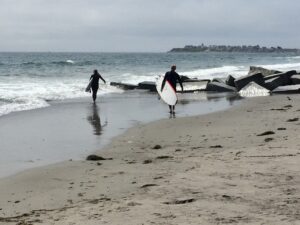
Kelp acts as a highly effective carbon sink, a natural defense against storms, habitat for species, and can be harvested for animal feed, medicine and actually, a pretty decent beer. It addresses the twin climate and biodiversity crises concomitantly, since they are inextricably linked and need to be addressed as such.
Nature based solutions (NBS) like planting kelp are a means of leveraging the innate power and potential in earth’s systems, flora and fauna, and using them to promote resilience. Many of these solutions – including, for example, prescribed burns and oyster reef restoration – have been developed and practiced by Indigenous communities since time immemorial. Without proper recognition, consent for use of knowledge, compensation, and centralization of Indigenous leadership, nature based solutions can become anti-Indigenous, and an extension of the violent and racist colonialism that has and continues to persist in the environmental movement and beyond. Thoughtful consideration of the use of NBS is vital.
These solutions are gaining momentum among communities, practitioners, decision makers, academics, and beyond, and I believe wholeheartedly that they’re one of the best means of making any real dent in recovering species and regulating our climate.
One way that I’m seeing NBS rise is at the state level. My job as Conservation Program Manager with the National Caucus of Environmental Legislators (NCEL) is to track land, water, and wildlife policies, share lessons learned with legislators across the U.S., and help them utilize the best available science and knowledge systems to advance equitable environmental policies. In 2023 alone, hundreds of state bills including NBS were introduced as a means of utilizing nature’s strengths as a solution to climate change and biodiversity loss.
State legislatures are essentially policy ‘test kitchens,’ except with less salt and no Guy Fieri. They’re where innovative measures can be piloted and repeated in other states, and ultimately with enough traction, at the federal and even international levels. States can set, maintain, and/or dismantle important legal narratives – especially when it comes to environmental issues.
For example, Montana’s recent Supreme Court win for youth was largely the result of a rights-to-nature state policy called the “Green Amendment” that was enacted in 1970. Green Amendments are environmental justice tools that solidify our rights to clean air, water, and a healthy environment, putting them on par with our other fundamental civil liberties like free speech. A powerful means of securing health for present and future generations, Green Amendments are picking up speed; in 2023, 13states introduced Green Amendments, and New York became the first state to enact one since 1971.
With the recent SackettSCOTUS decision gutting the Clean Water Act, experts sayit’s up to states to “step in and fill the void.” With federal protection absent, states are tasked with playing defense for wetlands protection, a habitat coined “earth’s kidneys,” due to their tremendous capacity to filter toxins and sustain life for countless species.
The potential of and pressure on States to play environmental offense and defense is high, but rarely is their capacity. Some, like New Mexico, Vermont, and Nevada (among others) are citizen legislatures, which means lawmakers have full-time year-round jobs on top of being a legislator, and many lack staff, compensation, or even a physical office. U.S. territories lack voting representatives in Congress, so what happens at the state/territory level matters immensely when federal representation is lacking.
 |
| Our Time Comes Signed Original 16x24 8x12 Open Edition Prints |
 |
| I See the Way Signed Originals Open Edition Prints |
Ultimately, my colleagues and I at NCEL try to fill in where capacity is lacking in state legislatures, calling ourselves “remote environmental staff.” We have a 30,000’ view of what’s happening on environmental state policy level on issues relating to, and are at the ready to provide research, briefings, connections to other states and best available science and knowledge systems, anything to help make their jobs easier. Federal efforts like the Bipartisan Infrastructure Law, Inflation Reduction Act, and the Nature-Based Solutions Roadmap have helped make clear the trend towards prioritizing NBS and the onus on States and partners for implementation.
As state trends on nature-based solutions continue to rise, we’ll continue to equip lawmakers with the best available science and knowledge/thinking as a means of addressing the twin crises of climate change and biodiversity loss. My dad and I are grateful for nature’s potential to heal, and we’ll join you in doing all we can to help sustain its gifts for future generations of surfers and beyond.
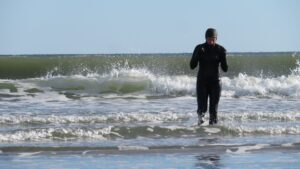
The Salazar Center is hosting the fifth annual International Symposium on Conservation Impact on October 11-12 in Denver, Colorado. The agenda focuses on nature-positive solutions and how they can catapult our communities towards durable, high-impact outcomes for climate, biodiversity, and human well-being.
There is an African proverb that goes, “If you want to go fast, go alone. If you want to go far, go together.” We hope that you will join us so we can work together to realize a nature-positive future for North America.
2023 Symposium on Conservation Impact presented by the Doris Duke Foundation
The fifth-annual International Symposium is on October 11– 12, 2023 in Denver, Colorado.
Across the globe, biodiversity – the rich variety of life on the planet – is deteriorating faster than at any other time in human history. North America is no exception: over 30% of its biodiversity has declined since 1970. This devastating trend threatens organisms, ecosystems, and the benefits that they provide like carbon capture, clean air to breathe, and clean water to drink. At the same time, climate change continues to put people and nature under severe stress. Experts around the world acknowledge that climate change and nature loss are inseparable crises and must be addressed urgently and holistically for the benefit of both the planet and people—especially poor and marginalized communities, who are already being impacted disproportionately.
Many North American communities are working hard to address climate change and biodiversity loss. But how do we magnify these efforts in order to create a net-positive impact? How do we work together to create the systemic change that enables a world where nature is being restored and is regenerating rather than declining?
We urgently need actions, strategies, and approaches that can help solve these intertwined crises at scale.
The Symposium will bring together diverse thought leaders from across North America to share their insights on how to move beyond individual projects to lasting systemic change that will drive a nature-positive future. The event will use keynote presentations, curated panel discussions, interactive breakout sessions, and networking opportunities to facilitate honest dialogue around issues such as:
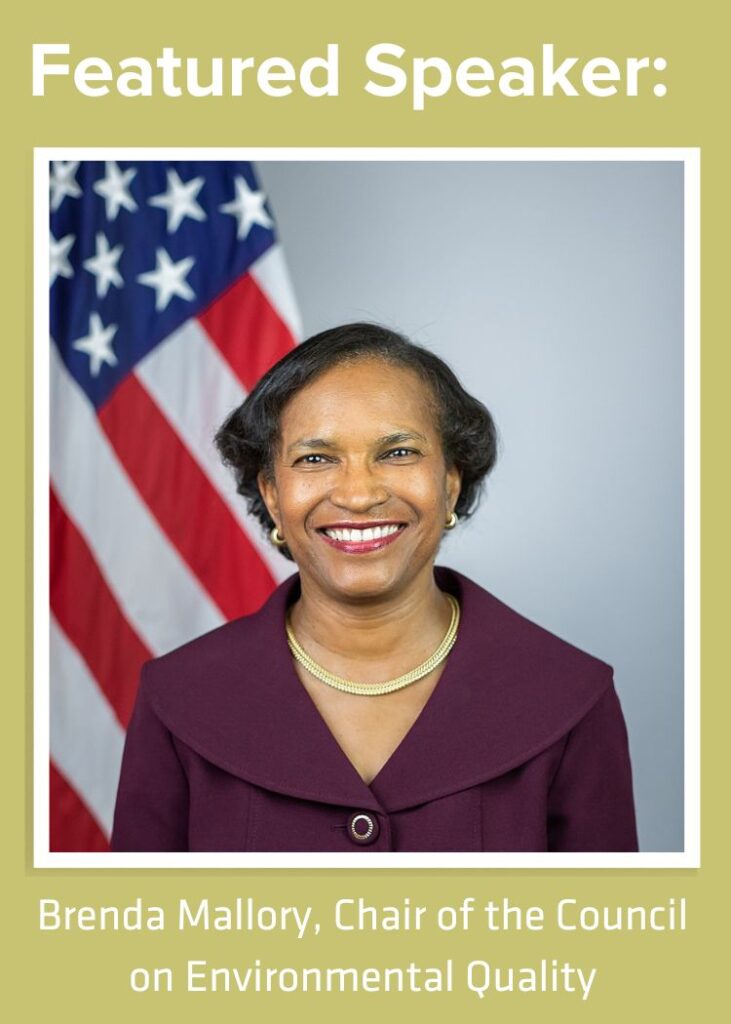
How can we design and implement nature-positive solutions to ensure more equitable outcomes for communities and people? How do we ensure these solutions benefit not only nature but also human well-being?
Fate Reimagined
Signed Originals Unsigned Open Edition Prints- How do we break down silos to ensure better outcomes for climate, nature, and people?
- How do Indigenous-led projects provide innovations for a nature-positive world?
- How can nature-positive approaches help the U.S., Canada, and Mexico meet their national conservation & climate targets? What are the strengths and weaknesses of taking a nature-positive approach when addressing these goals?
- What is the role of multilateral cooperation across the continent in creating the enabling conditions for more durable outcomes and to help scale-up local efforts?
- In what ways is the private sector working to promote and fund long-lasting and effective solutions to solve both climate and nature challenges? What do we need to do to transform our economic systems to support nature-positive outcomes?
The Symposium will showcase existing efforts across sectors and the continent. Attendees will learn about high-level challenges and opportunities that we all face in trying to solve these environmental crises. After attending the Symposium, participants will be able to bring best practices, resources, and new ideas on how to implement and scale Nature Positive Solutions in their work and communities back home. Not to mention a network of like-minded colleagues who are willing to learn and share knowledge during the Symposium and beyond.
There is an African proverb that goes, “If you want to go fast, go alone. If you want to go far, go together.” We hope that you will join us in Denver, Colorado so we can work together to realize a nature-positive future for North America.
Subscribe to the Center’s newsletter to get updates about the agenda and featured speakers sent to your inbox.
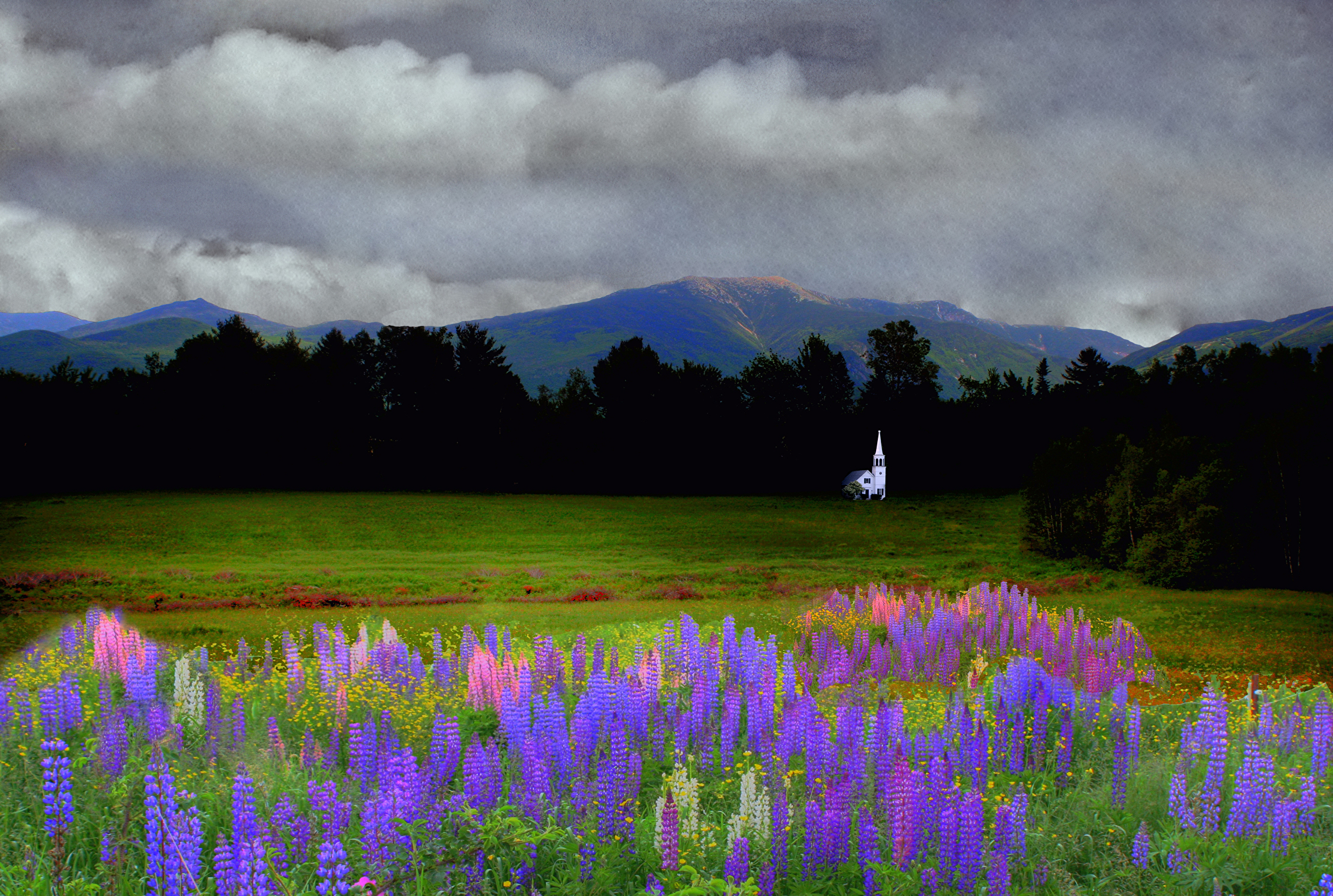 |
| Chapel in the Lupine Field Signed Originals Unsigned Open Edition Prints |
 |
| The Spirit of the Drafthorse Signed Originals Open edition print |
 |
| Tamarack Monochrome Under a Platinum Sky Signed Originals Unsigned Open Edition Prints |
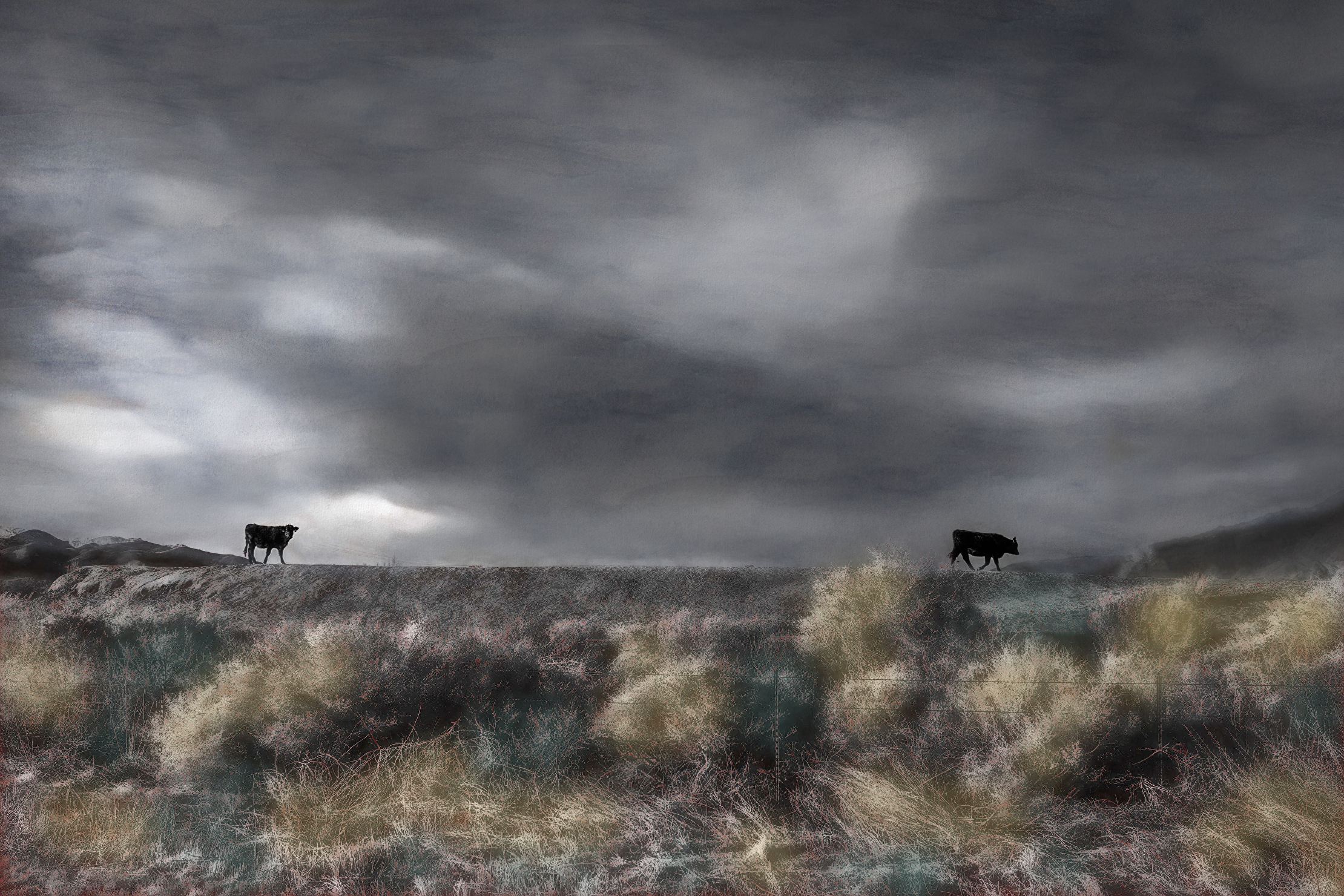 |
| Home Before the Storm Signed Originals Unsigned Open Edition Prints |
 |
| Trusses and Light Signed Originals. Unsigned Open Edition Prints |




